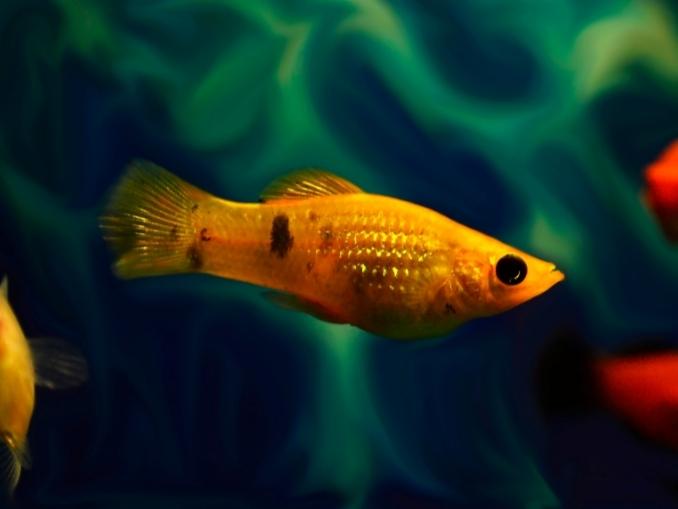Aquatic plants are beneficial for home tanks, mostly thanks to their decorative and water-filtering purposes. That said, if left uncontrolled, some plants may end up being a threat to others.
In today’s article, let’s have a look at duckweed and how to get rid of duckweed in aquarium. If you happen to own these plants, make sure to scroll down and see why you should be cautious.
Contents
What Is Duckweed?

Duckweed is a floating plant widely used in aquariums. Given their hardiness and fast reproductive rate, it should be no surprise as to why duckweed remains the top choice for aquarists.
What Are The Pros Of Duckweed?
Having duckweed inside a home tank can bring about various advantages.
First off, duckweed is edible. If your fish is omnivorous, feel free to let them feed on duckweed. Not only is it highly nutritious, but it also helps diversify your fish’s diet.
Secondly, duckweed can be of great assistance when it comes to algae control. As duckweed limits the amount of sunlight penetrating the tank, algae would fail to thrive.
Subsequently, rest assured that your tank will not be overtaken by such a nuisance.
Next up, duckweed filters the water and rids the tank of toxic buildup. With its preference for phosphates and nitrates, duckweed quickly absorbs these two chemical substances. As a result, your tank’s water is free of toxins.
Another reason why duckweed is highly favored is that they create the perfect playground for fish. Some fish do not enjoy having to interact with others all day long. Instead, they choose to lurk around and hide in aquatic plants, namely duckweed.
That is not to mention how duckweed can protect smaller, docile fish against aggressive ones.
Last but not least, duckweed can enhance the beauty of your tank. With their rounded leaves and floating nature, duckweed adds a pond-like appearance to your aquarium.
How To Get Rid Of Duckweed In An Aquarium (4 Steps)
Although duckweed is beneficial in many ways, it can still pose a threat to your fish community. With their fast-growing rate and light-blocking ability, duckweed can end up inhibiting oxygen and sunlight circulation.
Therefore, you may have to remove these plants from the tank before their total invasion.
Step 1: Use your hands
The first step requires manual labor. Scoop your hands directly inside the tank and remove as many duckweed leaves as you can. Throw the discarded duckweed into an empty bucket and continue the process until you can see little duckweed left.
This is hard work, but it surely alleviates the difficulty of the following steps. Thus, make sure you handle this with care.
Step 2: Use a net
While big patches of duckweed are already removed, smaller ones will still scatter throughout your tank. Since your hands cannot get hold of these tiny plants, consider using a net instead.
Gradually skim the net through your tank. This way, all visible duckweed will get caught and eventually gotten rid of.
Step 3: Clean the tank and its accessories
Strands and roots of duckweed can still get stuck inside your tank, especially on hidden crevices and tank corners. In this case, a thorough cleanup is needed.
But first, remember to transfer all of your fish to a separate tank. This way, they will not be affected by the cleaning chemicals.
Now, it is time to remove accessories inside the tank such as rocks or fake plants. As mentioned above, duckweed can easily get stuck on these items.
Thus, you will have to soak them in boiling water for at least 10 minutes. High temperatures will be more than effective when it comes to weed removal.
Next up, rinse everything with cold water. You can also use cleaning soap should you want to be more thorough here.
Now that you are done with the accessories, let’s move on to the tank’s equipment. These include tank filters and mesh dividers, all of which can be cleaned by a washcloth.
Do not forget to disconnect these items from their electrical source, or you might run the risk of being electrocuted.
Finally, there is only the tank itself left. You can use a cleaning solution to get rid of dirt and debris accumulation before washing the entire tank with warm water.
Step 4: Use duckweed-eating fish
While the aforementioned steps help clean up a tank, you cannot possibly do it all day. This is when duckweed-eating fish come in handy.
There are several types of fish that can eat duckweed effectively, including Koi fish, mollies, bettas, catfish, barbs, and goldfish. Depending on how large you want your community to be, feel free to pick a few species and group them.
When left on their own, these animals will consume duckweed and keep them in check. You need not worry about whether duckweed will be eliminated since it will grow back before you can realize it.

However, if you want to depend on duckweed-eating fish, you may have to create motivation for them to consume these plants instead of their daily meals.
These include a reduction in the number of meals and the amount of nutrients in each meal.
When your fish feel like they are underfed, naturally, they will go to the nearest source of food. In this case, it will be patches of duckweed.
Conclusion
Learning how to get rid of duckweed in an aquarium is relatively simple. Once you have mastered the art of tank cleaning, rest assured that you can effectively control your duckweed growth in no time.

